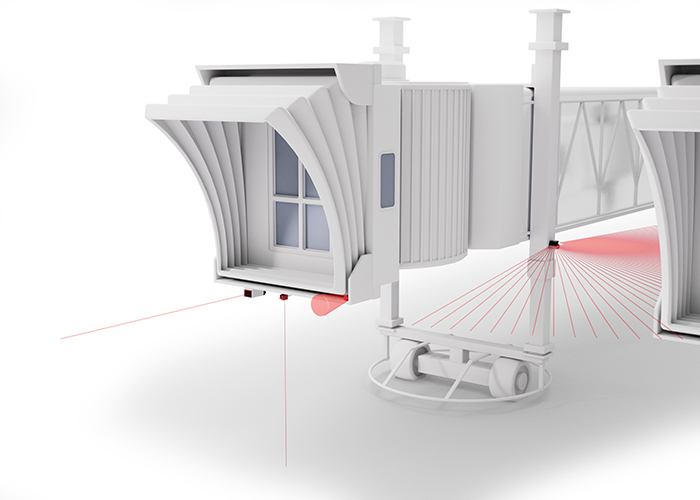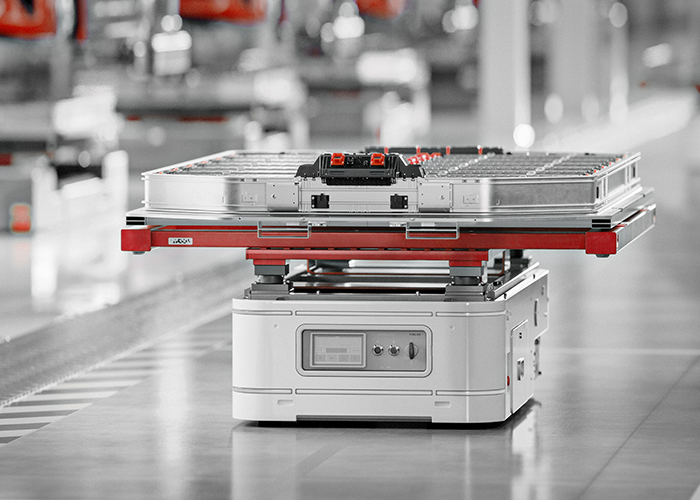Sensor solutions for controlling the passenger boarding bridge
To ensure boarding is as convenient as possible on a wide range of aircraft types, passenger boarding bridges must be adjustable in both height and position while maintaining safety at all times.

Docking control

Requirement:
The distance must be measured to enable the automatic docking of the passenger boarding bridge to the aircraft. This must take different aircraft sizes and shapes into account.
Solution:
An ODSL 30 optical distance sensor is suitable for rough measurements over long distances, while an HTU 430 or DMU 430 ultrasonic sensor is ideal for short distances, offering a wide detection range and reliable performance regardless of color or shape.
Height adjustment

Requirement:
The platform height must be adjusted for barrier-free access to the aircraft. To do this, the height from the ground is measured in a way that provides reliable data in all environmental conditions.
Solution:
The distance is measured with a robust ODS 96, which is available in different versions depending on the required data output.
Collision detection

Requirement:
If several passenger boarding bridges are used close to each other, they must be prevented from colliding with each other by maintaining minimum distances. The design of bridges requires a large number of detection points to be taken into account.
Solution:
The ROD 100/ ROD 300 area scanners allow any shape of detection field to be created using software, and objects can be detected regardless of color and surface. Depending on the desired solution, the ROD provides measured values (for external evaluation) or switching signals (for internal evaluation).

























